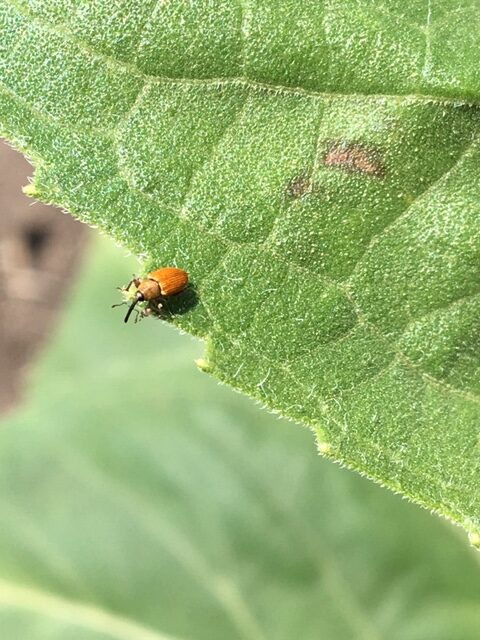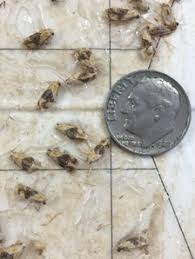Sunflowers that were planted this spring are growing very rapidly. Bud formation (R1) through bloom (R5) is when sunflowers gain most of their height and is an important time to be scouting for pests. Below are a few of the important things to look for in sunflower fields this time of year to help reduce the risk of yield loss.
Red Sunflower Seed Weevil
The adult weevil is what you scout for, but it’s the larvae that causes damage by eating the inside of the seed and exits, leaving behind a small hole. Yield and test weight can be affected. Here’s what to consider:
- Scouting is best done right at bloom with a can of bug spray
- Females feed on the pollen before depositing eggs, best time to spray is R5.1-R5.4
- Threshold varies based on market and price, but the average is 4-6 weevils per head for oil seeds.

Banded Sunflower Moth
Larvae of this moth eats the inside of the seed, exiting and leaving behind a small hole. Here’s what to consider:
- Three ways to scout: eggs on the bracts at R3–R4 staging, pheromone traps or looking for adults in the field (can be difficult)
- Best timing for an insecticide application is R4–R5.1 (early bloom)
- Threshold at $18 market price is 2-3 eggs/6 bracts or 1 adult moth per 100 plants

Banded Sunflower Moth in a pheromone trap
Sunflower Rust
Sunflower rust can overwinter in cold climates and is very damaging to sunflowers. Here’s what to consider:
- Scout by looking for rust pustules on the bottom side of sunflower leaves (will leave a rust colored residue when rubbed)
- A fungicide application can help prevent yield loss when sprayed at bloom if a threshold of a least 1%pustules is found on the upper 4 leaves
Sunflower Rust Threshold | Source: NDSU
Resources:
